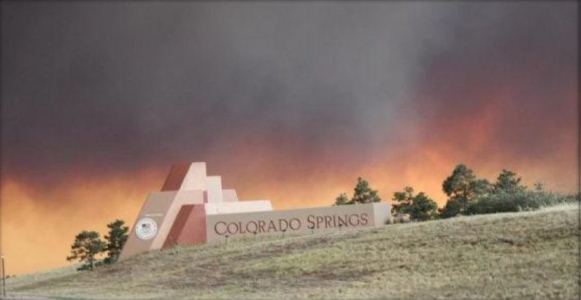 An After Action Report (AAR) was released today about the Waldo Canyon Fire that burned into Colorado Springs June 26, destroying 345 homes and ultimately blackening over 18,000 acres. This AAR is not the final, comprehensive report on the fire, but is considered preliminary. An in-depth analysis will occur over the next several months to fully explore Colorado Spring’s management of the fire.
An After Action Report (AAR) was released today about the Waldo Canyon Fire that burned into Colorado Springs June 26, destroying 345 homes and ultimately blackening over 18,000 acres. This AAR is not the final, comprehensive report on the fire, but is considered preliminary. An in-depth analysis will occur over the next several months to fully explore Colorado Spring’s management of the fire.
The organization of the report is a little unusual, listing strengths and recommendations, but omitting many of the issues that caused the recommendations. Therefore, it is not always clear WHY the recommendations were made, forcing an observer to read between the lines. This limits the opportunities for lessons learned and may not in all cases have the desired result of preventing mistakes. Maybe the final report will fill in these gaps.
The report listed several areas identified as “major strengths”, including interagency cooperation, dedicated personnel, pre-incident training and exercises, planning, and the fact that they saved 82 percent of the homes in the direct impact area.
Some of the recommendations:
- A system needs to be designed to provide immediate notification to first responders and key agency representatives as decisions are made.
- Real-time documentation. Use “scribes” to track real-time information for record keeping and serve as a communication link between locations when primary staff is busy with their duties.
- Train staff and volunteers who can serve in the Emergency Operations Center to staff a more robust Logistics Section.
- Provide additional training on the use of the Incident Command System (ICS).
- A Communications Unit Leader should be assigned to ensure that an incident-wide Communications Plan is developed.
- Exercise the numerous emergency management plans. The report listed seven of them.
- For the Emergency Operations Center, develop an organization chart early in the incident, and train the personnel on their roles and how to interface with the Incident Command Post.
- Develop a plan on how to provide adequate food to incident personnel.
- Establish procedures for handling large quantities of donated food and water. Provide incident management training for non-profits and agency personnel to improve management of volunteers and donations.
- Develop a plan to ensure incident personnel work consistent shifts and receive adequate rest, breaks, and rehabilitation (food and supplies).
- Evaluate the need for post-incident critical stress debriefings.
- Develop an ICS organization chart to ensure that a Safety Officer and Accountability Officer are assigned.
- Ensure that span of control policies are followed.
- Utilize Staging Areas to assist in accountability of personnel and resources.
- Use street names rather than neighborhood names to define evacuation boundaries.
- Provide maps of areas that are being evacuated to first responders.
In reviewing the recommendations in the ARR, it appears that many of them would be mitigated with adequate training and experience in the Incident Command System, NIMS, or NIIMS. A Type 1 Incident Management Team assumed command of the fire at the end of Day 2, June 24; most of the homes were destroyed on June 26. The team was no doubt very fluent in the use of ICS, but if they were interfacing with multiple agencies who had limited knowledge in the management system, there could have been some inefficiencies and a lack of adherence to ICS protocols.
You can download the entire 1.7 MB After Action Report.
HERE is a link to articles on Wildfire Today that mention both “Waldo Canyon” and “Colorado Springs”.


Although it never directly states it, apparently this AAR was done by the city of Colorado Springs. In the executive sumamry, they state that the report focuses on the WUI response within City limits and they specifically did not talk with the feds for this report. So a very incomplete picture at best.
This has somewhat of a feel that cities, even in high risk fire prone areas, are just checking the box that their staff has attended the recommended ICS training. FEMA has been requireing ICS training and adoption for many years now to be eligible for $. Like so many other cities i think they are phoning it in.
The other piece i see that is missing is what tactics were being undertaken by the type 1 team at the time? Was there a laid back response from the team? until it blew up? If there were resource orders outstanding and the GACC was not getting accurate information as to the potential. With a type 1 team being immediatly ordered, someone saw the potential.
I am not trying to armchair quarterback this but this AAR is made to feel like the only FF’s there were structure guys. I am not knocking the work they did but they were not the only game in town fighting this thing!